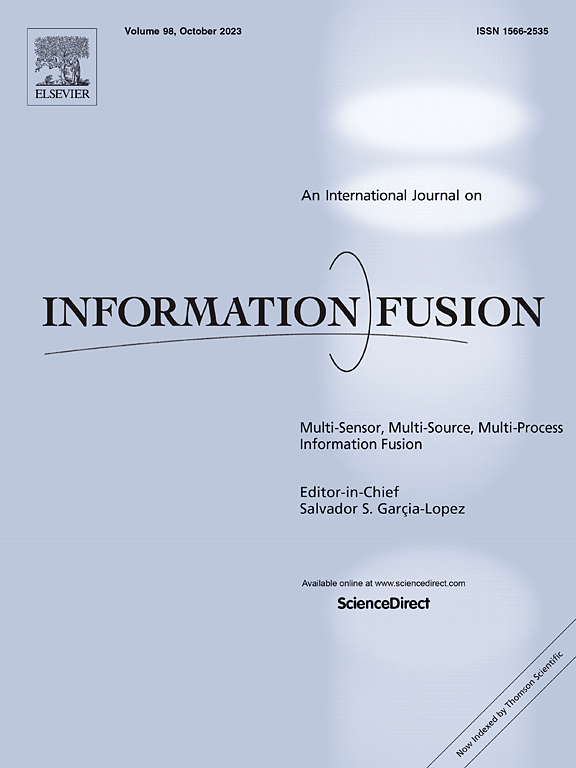Multi-view evidential K-NN classification
IF 14.7
1区 计算机科学
Q1 COMPUTER SCIENCE, ARTIFICIAL INTELLIGENCE
引用次数: 0
Abstract
Multi-view classification, aiming to classify samples represented by multiple feature vectors, has become a hot topic in pattern recognition. Although many methods with promising performances have been proposed, their practicality is still limited by the lack of interpretability in some situations. Besides, an appropriate description for the soft labels of multi-view samples is missing, which may degrade the classification performance, especially for those samples located in highly-overlapping areas of multiple vector spaces. To address these issues, we extend the K-nearest neighbor (K-NN) classification algorithm to multi-view learning, under the theoretical framework of evidence theory. The learning process is formalized, firstly, as an optimization problem, where the weights of different views, an adaptive K value of every sample and the distance matrix are determined jointly based on training error. Then, the final classification result is derived according to the philosophy of the evidential K-NN classification algorithm. Detailed ablation studies demonstrate the benefits of the joint learning for adaptive neighborhoods and view weights in a supervised way. Comparative experiments on real-world datasets show that our algorithm performs better than other state-of-the-art methods. A real-world industrial application for condition monitoring shown in Appendix F exemplifies the need to use the evidence theory and the benefits from the unique interpretability of K-NN in detail.
求助全文
约1分钟内获得全文
求助全文
来源期刊

Information Fusion
工程技术-计算机:理论方法
CiteScore
33.20
自引率
4.30%
发文量
161
审稿时长
7.9 months
期刊介绍:
Information Fusion serves as a central platform for showcasing advancements in multi-sensor, multi-source, multi-process information fusion, fostering collaboration among diverse disciplines driving its progress. It is the leading outlet for sharing research and development in this field, focusing on architectures, algorithms, and applications. Papers dealing with fundamental theoretical analyses as well as those demonstrating their application to real-world problems will be welcome.
 求助内容:
求助内容: 应助结果提醒方式:
应助结果提醒方式:


